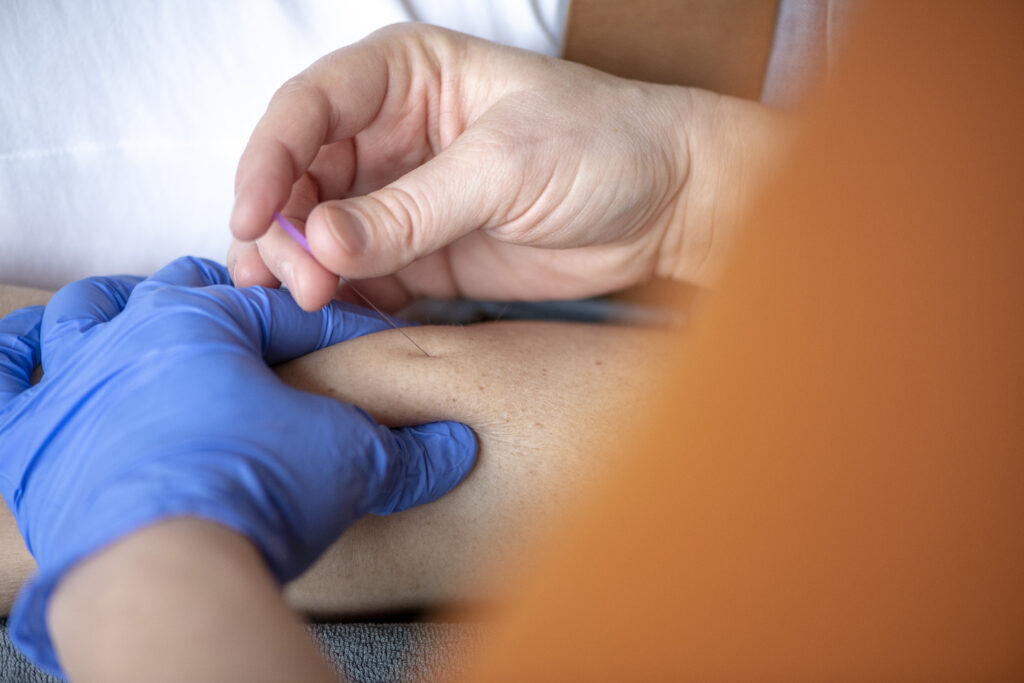Are you experiencing tennis elbow or pain on the outside of your elbow or forearm? Dry needling is an effective therapy that can provide significant relief. Dry needling, also known as trigger point dry needling and intramuscular stimulation, can help relieve pain, discomfort, weakness, swelling and inflammation around the affected area. Here’s how.
Causes, Symptoms and Treatment Options
Tennis elbow, or lateral epicondylitis, commonly affects millions yearly. It is caused by overuse of the forearm muscles and tendons that attach to the outside of the elbow, resulting in small tears and inflammation. The most common symptoms of tennis elbow include pain, tenderness, stiffness on the outside of the elbow, weakness and difficulty gripping objects. Treatment options for tennis elbow pain include rest, ice, physiotherapy, pain management and in severe cases, surgery.
What is Dry Needling and is It Good for Tennis Elbow?
Dry needling is a minimally invasive technique that involves inserting thin needles into trigger points in your muscles and soft tissues to relieve pain and tension. It works by stimulating your body’s natural healing response and reducing inflammation. Dry needling for tennis elbow pain is typically performed on forearm muscles and tendons affected by the condition. The needles may be left in place for several minutes or moved or rotated to achieve the desired effect.
While some people may experience discomfort during the procedure, most find it a safe and effective treatment option.
Dry Needling vs Other Tennis Elbow Treatment Options
Other treatment options for tennis elbow pain include equally non-invasive shockwave therapy, medications, hand therapy and surgery. However, dry needling has gained popularity recently as a safe and effective alternative to these traditional treatments. Dry needling is minimally invasive compared to other treatments and has few side effects. Dry needling for tennis elbow also has a high success rate and can provide long-lasting relief from pain and tension. While every person’s experience with tennis elbow pain and treatments is unique, dry needling is a promising treatment option.
How Dry Needling Targets Trigger Points to Relieve Tennis Elbow Pain
Dry needling targets your trigger points, which are tight knots or bands of muscle that can cause pain and discomfort. A needle inserted into a trigger point creates a small lesion that triggers the body’s natural healing response. This response includes the release of endorphins, which are natural painkillers and activating the immune system to reduce inflammation. Over time, the body repairs the damage caused by the needle and the trigger point is released, resulting in pain relief and improved range of motion.
What You Need to Know Before You Try It
Dry needling for tennis elbow is generally considered safe when performed by a qualified practitioner. However, as with any medical procedure, there are some risks involved. The most common side effects of dry needling include temporary soreness, bruising and bleeding at the needle insertion site. In rare cases, dry needling can cause serious complications such as infection, nerve damage or organ injury. This is why choosing a qualified practitioner who has received proper training and certification in dry needling is important.
How to Prepare for a Dry Needling Session
If you are considering dry needling for tennis elbow pain, there are a few things you can do to prepare for your session. First, make sure you choose a qualified professional with dry-needling experience. Next, wear comfortable clothing that allows easy access to your arm. You may also want to take pain medication before your session to help manage any discomfort. As well as this, be sure to communicate with your practitioner about any pain or discomfort you may be experiencing during the session.
Tips and Tricks to Keep Your Elbows Healthy and Pain-Free
If you experience tennis elbow pain, there are several things you can do about it. First, warm up properly before engaging in any physical activity involving your arms and elbows. You should also use proper technique when doing anything with repetitive motions, such as typing or using tools. Additionally, you can strengthen the muscles and tendons in your forearms and wrists with targeted exercises and stretches. Finally, if you experience pain or discomfort in your elbows, take a break and rest them to prevent further injury.
Dry needling is an effective and safe treatment option for tennis elbow pain. While some risks are involved, choosing a qualified MGS Physio practitioner and preparing for the session can help minimise them. You can keep your elbows healthy and pain-free by taking steps to prevent tennis elbow pain in the future, such as warming up properly and using proper technique. If you’re experiencing tennis elbow pain, try dry needling – it might make a difference in your life! Book now at MGS Physiotherapy.
CALL NOW TO BOOK YOUR APPOINTMENT

